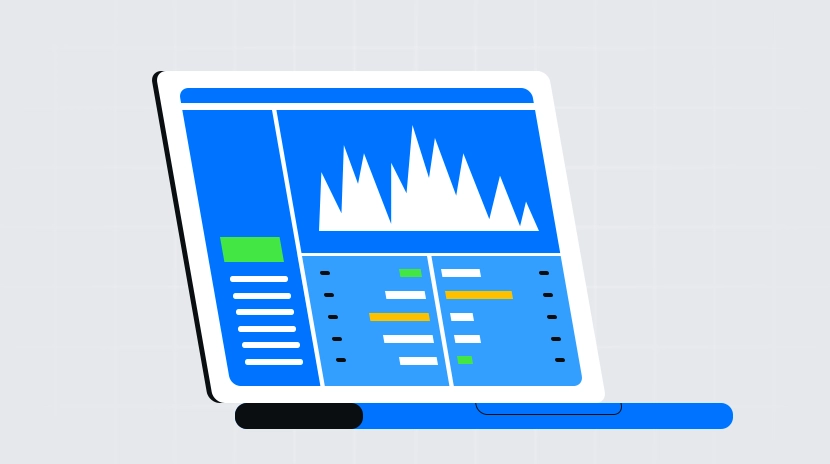define mid cap

Mid-cap stocks refer to publicly traded companies with medium market capitalizations, typically positioned between large-cap and small-cap stocks. While definitions vary across global markets, in the U.S. market, mid-cap stocks generally have market capitalizations ranging from 10 billion. In the cryptocurrency sector, mid-cap coins are digital assets with medium-sized market capitalizations, usually ranking between 100-500 in market cap rankings, although there's no strictly uniform standard. Mid-cap stocks/coins combine a certain degree of market stability with growth potential, offering investors a balance between risk and return.
Market Impact of Mid-Cap Stocks
Mid-cap stocks play a crucial intermediate role in both traditional finance and crypto markets, with their market impact manifested in several ways:
-
Liquidity balance: Mid-cap stocks/coins typically have sufficient trading volume and market depth to support larger-scale transactions without causing dramatic price fluctuations, yet don't have the excess liquidity of large-cap assets.
-
Growth potential: Compared to highly mature large-cap stocks, mid-cap companies/projects usually offer greater growth potential, potentially delivering excess returns to investors.
-
Index representation: Mid-caps are often included in specific mid-cap indices, such as the S&P MidCap 400 Index or Russell Mid Cap Index, while in the cryptocurrency market, some rating agencies separately track the performance of mid-cap coins.
-
Institutional attention: Mid-cap assets are often an important area for institutional investors' positioning, especially for investment funds seeking above-average market returns.
-
Industry innovation: Many mid-cap companies/projects are in rapid growth phases, typically more flexible and able to quickly adapt to market changes and technological innovations.
Risks and Challenges of Mid-Cap Stocks
While investing in mid-cap stocks/coins offers certain advantages, it also comes with specific risks and challenges:
-
Volatility risk: Compared to large-caps, mid-cap stock prices usually experience greater fluctuations, especially during periods of increased market uncertainty. In the cryptocurrency market, this volatility may be further amplified.
-
Limited analytical coverage: Mid-cap companies/projects typically receive less analyst coverage, with information potentially not as comprehensive and transparent as for large-cap stocks.
-
Competitive pressure: Mid-cap businesses/projects often face double pressure from industry giants and emerging small competitors, creating significant survival and growth challenges.
-
Funding difficulties: Compared to large-cap companies, mid-cap enterprises may face more restrictions in financing, especially during market contractions. Crypto projects face similar funding challenges.
-
Regulatory risk: As they grow in size, mid-cap companies/projects may face increased regulatory scrutiny, especially in the cryptocurrency sector, where regulatory uncertainty can significantly impact mid-cap coins.
Future Outlook for Mid-Cap Stocks
The development prospects for mid-cap stocks/coins are closely related to economic cycles, industry innovation, and changes in market structure:
-
Structural opportunities: With the development of the digital economy and transformation of traditional industries, many mid-cap companies have the potential to achieve leapfrog growth through innovative business models and technology applications.
-
Integration trends: Industry consolidation may allow some high-performing mid-cap enterprises to grow into large-cap companies through mergers and acquisitions, while some mid-caps might be acquired.
-
Index investment growth: The popularization of ETFs and index funds has brought more passive investment inflows to mid-cap stocks, a trend expected to continue.
-
Development of crypto mid-caps: As the crypto market matures, some mid-cap coin projects will grow into industry leaders through technological innovation and expansion of practical application scenarios.
-
Cross-border development: Globalization trends provide mid-cap companies/projects with more opportunities to expand into international markets, especially those with unique technologies or business models.
As an important component of the market, mid-cap stocks/coins are expected to continue attracting attention from investors seeking to balance risk and return.
Mid-cap stocks offer unique value in investment portfolios, providing a balance between the relative stability of large-caps and the growth potential of small-caps. For traditional investors, mid-caps are typically an important component in building a diversified portfolio; for cryptocurrency investors, mid-cap coins offer opportunities to achieve considerable returns while maintaining a certain safety margin. Understanding the characteristics, risks, and opportunities of mid-cap assets is crucial for developing comprehensive investment strategies. As markets develop and mature, the definitions and classification standards for mid-caps may adjust over time, but their role as a bridge connecting large and small market participants will continue to exist.
Share
Related Articles

Gate Research: 2024 Cryptocurrency Market Review and 2025 Trend Forecast

Altseason 2025: Narrative Rotation and Capital Restructuring in an Atypical Bull Market
